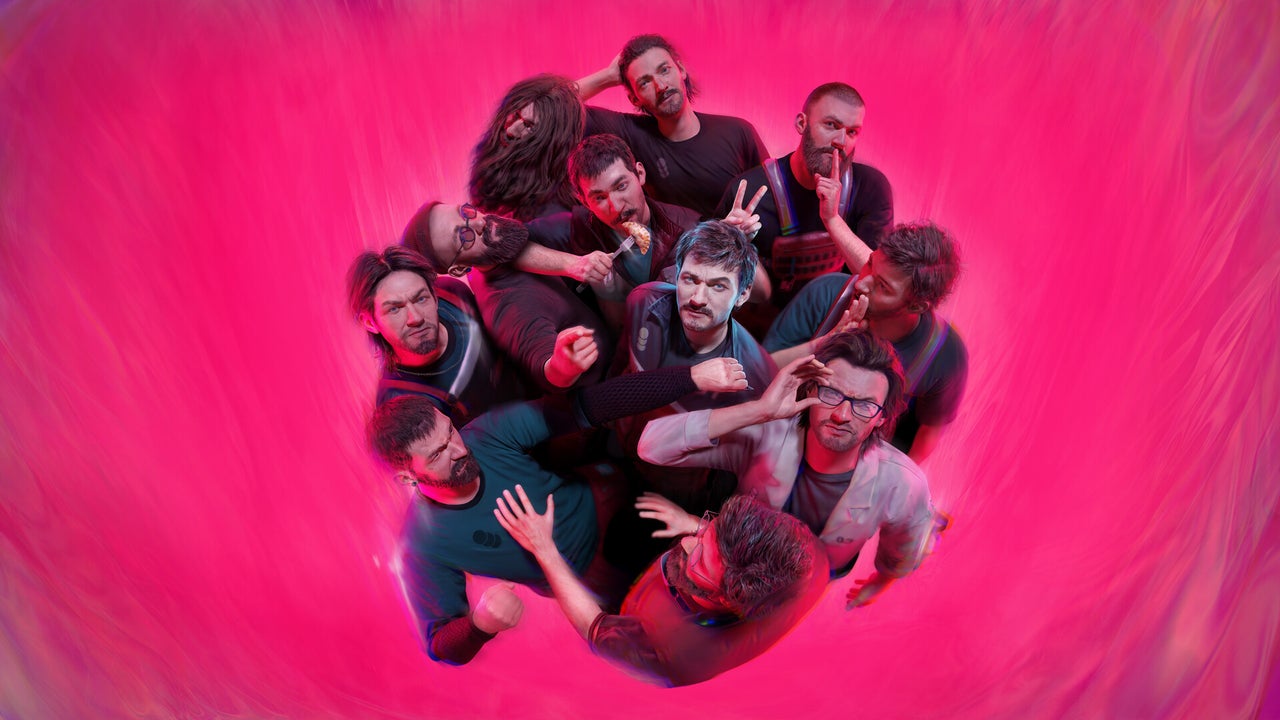想像を絶するクローンと過酷な惑星サバイバル!話題のゲーム「The Alters」徹底レビュー
孤独な惑星、そしてクローンたち
あなたは人生で後悔したこと、ありますか?SFゲーム「The Alters」は、そんなあなたの心に響く、倫理的にグレーなクローン技術と過酷な異星でのサバイバルを描いています。
プレイ可能な「ブラックミラー」エピソード(あのとは違いますよ!)と言える本作は、暴走するテクノロジー、そして自分自身の「もう一つの可能性」と向き合う物語です。
もし、その「もう一つの自分」があなたを憎んでいたら…? そして、それが狂気の科学者や企業の陰謀によるものだったら…? シンプルながら効果的な資源収集と基地運営、そして容赦なく照りつける太陽による死の脅威。 本作は、個人的な危機と環境的脅威が入り混じる、圧巻のゲーム体験を提供します。
主人公ヤン(Yonと発音)は、不毛の惑星への不時着事故で生き残った唯一の人物です。ゲーム開始早々、孤独で不穏な雰囲気が漂う、異質な惑星がプレイヤーを待ち受けています。灰色で荒々しい岩山と、油のような光沢を放つ水、そして「ラピディウム」と呼ばれる謎の物質が織りなす、幻想的な光景が広がっています。
そして地平線には、巨大な車輪型基地がそびえ立っています。
死と隣り合わせのサバイバルレース
太陽が昇る前に基地を移動させるため、一刻も早く資源を集めなければなりません。
地表から資源を採取し、採掘機械を建造、基地に電力線を繋げる…「サタフライ」のようなリソースゲームのライト版と言えるシンプルなシステムですが、ヤンの労働時間や夜間の放射線被ばくには注意が必要です。
さらに、地表には目に見えない放射性異常も潜んでおり、迷路のようなマップの探索に緊張感を与えています。ゴーストバスターズのプロトンパックのような装置で異常を無力化し、資源に変えることもできますが、新たなタイプの異常は、プレイヤーの知覚を狂わせるなど、常に緊張感を与えてくれます。
基地運営とクローンたちの物語
基地内では、視点が三人称視点からジオラマのような2.5Dサイドスクローラーに切り替わります。
「XCOM」を彷彿とさせる基地運営は、自由に部屋を配置・移動・削除でき、非常に柔軟性が高いです。しかし、部屋の場所を覚えきれず、探すのに苦労することも…。
拡大する基地の管理は、やがて複雑さを増していきます。
重要な施設の一つが「子宮」です。倫理的に問題のある企業幹部との曖昧なやり取りを経て、ヤンの異なる人生の可能性をシミュレートするクローン作成を開始します。彼らは虐待的な父親を持つという共通点を持つものの、人生の転機における選択の違いにより、大きく異なる性格や専門性を持ちます。
各クローンは髪型や話し方が異なり、少々滑稽な部分もありますが、個性豊かなクローンたちの存在は本作の魅力です。
30時間かけて3つの章をクリアするまでに、私は6体のクローンを作成しました。しかし、これは全てではありません。全てのクローンと出会うには、何度もプレイする必要があります。
本作は、「Fallout Shelter」のようなマネジメントゲーム要素も持ち合わせています。クローンたちの特性を活かし、役割を割り当てていくのですが、人員不足に悩まされることも多く、最適な解決策を見つける必要があります。
倫理的なジレンマとサバイバル
クローンたちとの関係は、食事、休息、娯楽(面白いコント番組やビールポンミニゲームなど)を提供するだけでなく、それぞれに合った対応をすることが重要です。中には自傷的な傾向を持つクローンもおり、適切な対応をしないと、作業効率が低下したり、最悪の場合死亡してしまう可能性もあります。
序盤は平和を保つのは容易ですが、脱出計画が進むにつれて、難しい倫理的な決断を迫られる場面も出てきます。これはまさに「コバヤシ・マル」のような、解決策のない状況への対応を試される場面と言えるでしょう。
本作は、ストーリーテリングにおいて簡素化された表現を採用しています。クローン以外のキャラクターは、ノイズに邪魔された音声のみで表現されています。一部のセリフは繰り返し使用されますが、倫理的なジレンマや人間関係、雰囲気は効果的に表現されています。
過酷な環境と資源探査
基地を移動するたびに、新たなマップが登場します。各マップはそれぞれ異なる異質な風景と、資源探査のための迷路のような経路が特徴です。高レベルの研究に必要な資源を収集するには、マップをくまなく探索する必要があり、時間を要することがあります。しかし、ファストトラベルシステムは、探索範囲を広げる上で非常に役立ちます。
一方、資源鉱脈を発見するための探査機配置は、やや煩雑で退屈な作業です。探査機の配置ミスは何度でもやり直せますが、時間と労力を消費する作業と言えます。
磁気嵐などの環境災害もプレイヤーを脅かします。「Frostpunk 2」を彷彿とさせるこの要素は、プレイヤーに常に緊張感を与え、基地運営に気を抜かせません。基地の移動は、常に時間との戦いとなります。
まとめ:挑戦的なサバイバル体験
「The Alters」は、ユニークな設定とゲーム性で、プレイヤーを魅了する作品です。クローンたちとの関係構築、過酷な環境下でのサバイバル、そして倫理的なジレンマ…数々の挑戦がプレイヤーを待ち受けています。この挑戦的なゲーム体験に興味を持った方は、ぜひプレイしてみてください。
Hey, do you have any regrets in your life? The Alters knows that you do, and that’s why its sci-fi story about morally and ethically questionable cloning on a wildly inhospitable alien planet hits home. It’s comparable to a playable Black Mirror episode (no, not that one) that envisions technology run amok, where science has granted us the ability to talk to versions of ourselves who took the road we didn’t travel. It then asks: what if some of those people hate your guts? Also, what if this is all the product of a mad scientist and/or corporate exploitation? Combined with a simple but effective resource harvesting and base management balancing act, as well as the constant specter of approaching death by a scorching sun, it’s an effective pressure cooker of both personal and environmental hazards.
When Jan (pronounced Yon) wakes up to find he is the only survivor of a crash landing on an uninhabitable planet, The Alters immediately sets an isolating and eerie tone. This planet is remarkably otherworldly – barren and gray with jagged rock formations, but splashed with shimmering colors from oily-looking water and distortions created by this universe’s brand of Unobtainium, called Rapidium. Soon there’s a striking feature on the horizon: the expedition’s mobile base, which is a distinctive towering wheel that suspends its habitat in the middle.
There’s a palpable urgency as you scrape together enough resources to survive and get the base moving before the sun comes up and broils the surface. It’s not difficult to extract enough organic resources to feed Jan and fuel the base – you simply gather chunks from the surface, build mining machines, and then network them back to your base with powerline towers in a light version of resource games like Satisfactory – but you have to keep an eye on the clock to make sure you’re not overworking him or exposing him to too much nighttime radiation. The planet’s surface is also littered with radioactive anomalies that are initially all but invisible until you’re right on top of them, so navigating the maze-like map has a fair bit of tension to it even though there are no aliens actively trying to eat you. You do soon develop tools to make those anomalies easier to deal with by zapping their moving cores with what feels like a Ghostbusters proton pack, reducing them to rolling balls of resources. However, new and unexpected types are soon introduced that mess with your perception and make you approach them in different ways to keep you on your toes.
When you enter the base, The Alters shifts perspective from over-the-shoulder third-person to a diorama-like view, and you move around like a 2.5D sidescroller. It instantly gave me XCOM vibes, except you can actually run around as a character within it, moving between floors with elevators. Laying out the base with the new room types you unlock is a flexible puzzle that usually has very low stakes: there’s no build time when you place a new social room or refinery or store room, you can freely move almost anything around to make the best use of your limited space at no cost, and you can delete rooms for a full (or very generous) refund of resources at any time, provided you have the storage space to accommodate the materials.
That’s fun to mess around with (for a bit I was moving rooms I needed to access right next to me rather than walking to them) but it does get disorienting: running around wondering “now where did I put that communications room?” got old quickly. You can zoom out to see everything, but can’t move while in that ant farm perspective, so I ended up trying to minimize how much I shifted things around so that I could memorize what was where. It eventually becomes a little tricky as you expand the base and cram in more large rooms and storage, working around an immovable block in the middle, and it can be convoluted to reach an essential room when you need to. But being able to basically start from scratch whenever you want means it’s never too frustrating.
One of the first and most important rooms you’ll build is The Womb, which fuzzy communications with your ethically questionable corporate middle managers tell you to set up to kick off The Alters’ big experiment. Combined with Rapidium and a quantum computer that reaches into a map of Jan’s formative memories and simulates the life he would’ve had if he’d made different choices, it creates clones of him with different specialties and philosophical differences. All of them share an abusive father, but where they go from there is drastically different based on choices like if they left home, went to school, sold their house, met their wife, and other pivotal moments. It’s a little silly at times in that each version of Jan has different hair and a different way of speaking – the gruff, blue-collar Miner and the nerdy Scientist being the product of a few different life choices seems a bit far-fetched – but it’s a fun idea to think about and a great and novel way to explore these characters. Alex Jordan, the actor who plays all the Jans, is clearly having a good time finding ways to set them apart from one another – it reminds me of Tatiana Maslany playing clones in Orphan Black.
I eventually created six clones across the 30 hours it took me to complete the third act, which is not all of the possibilities – you’ll have to play through at least a couple of times to meet the rest, and I’m looking forward to another run where I know all the goals in advance and can optimize my approach to gathering resources and unlocking new technologies. This turns The Alters into a management game that reminds me of Fallout Shelter, where you’re assigning your team of specialists to tasks according to their strengths, but rarely have enough people to do everything you want to as efficiently as you’d like, so you’re forced to come up with the best solution you can. Some of them are essential for every playthrough – you need the Scientist to unlock any new technologies, for instance – but most, like the Doctor or the Guard (who I have yet to create) are optional and will make playthroughs at least a bit different with their unique production bonuses and personality. I do wish the menu for selecting a crewmember to work a job would list where they’re currently working, though. I frequently had to back up a step to make sure I wasn’t taking someone away from an essential role, then go back into the menu and reassign them.
Managing your relationships with your Alters is partially about satisfying their basic needs with good food, enough rest, and some entertainment (such as gathering to watch a series of legitimately funny live-action sketch comedy videos and a simple skippable beer pong minigame), but it’s also a game of getting to know which Jans value compassionate responses and which will thrive with some tough love and bluntness. Some of them have self-destructive tendencies that need to be kept in check – they’ll work fewer hours if they’re unhappy, and can permanently die if they’re abused or left to their own devices. In the first act of the story it’s easy enough to keep the peace, but naturally that can’t last. As wrenches are thrown in the gears of your plan to escape this planet with a stockpile of invaluable Rapidium, you’re forced to make legitimately tough moral decisions that some of your Alters will strongly disagree with. There may well be a way to get through it optimally, but from what I’ve seen it’s very much a Kobayashi Maru: a test of how you deal with a no-win scenario.
The Alters certainly cuts corners in how it tells its story – anything that isn’t a one-on-one conversation between Jan and an Alter is shown as a storyboard with voiceover rather than an animated cutscene, and the few characters who aren’t clones are obscured by static in the transmission from Earth so we only hear their voices. Some voice lines are recycled often, like when you present an Alter with a personal item you’ve found among the wreckage of the crashed ship to butter them up. But it does a lot with a little in that respect, and very effectively gets across the moral dilemmas, relationships, and mood. There’s even a musical performance where all the Jans collaborate on a song, and it’s only a little bit cheesy.
Every time you move the base to stay ahead of the sun you come to a new map, and each of them is a visually distinct alien landscape and a maze of interconnected pathways to explore in order to open the way forward. There are obstacles to clear and work around, which means unlocking new tools and spending your suit’s limited energy and resources to grapple up high cliffs or vaporize rocks in your path. It’s not difficult, but some of the puzzles you have to solve to gather essential resources for high-level research unlocks require you to uncover and follow a winding trail around the map that can be time-consuming enough to span multiple in-game days. The fast-travel system is a clever way to let you cover more ground and avoid too much backtracking by building out your tower network like breadcrumbs as you explore, and there are special pylon types you can place that are specifically for teleporting around.
The mechanic for uncovering deep resource veins to place a mining machine on is a chore, though. You’re required to create polygonal shapes by placing probes, which lets you look through the ground. It’s not hard, but it feels pointless and fiddly because you can just gather your probes and try again if you miss. (I suspect that at one point in development you had to spend resources to make them but that idea was scrapped and the cost was removed.) All it consumes is time, which is a precious resource, and it isn’t a very entertaining use of it.
There are other hostile environmental hazards that can mess you up, too: The Alters very quickly reminded me of developer 11Bit’s other recent game, Frostpunk 2, with its occasional magnetic storms that make venturing outside for resources all but impossible and force you to rely on your stockpiles while you race to repair escalating damage to the base. Things like that keep the pressure on and force you to consider taking measures like making your team work overtime hours, and prevent you from putting too much of management on autopilot even as you unlock more automated resource extraction tools. Multiple times, gathering enough resources to move the base came down to the wire – I had to be ready to go before the sun caught me, and I made it out by hours, not days.




コメント